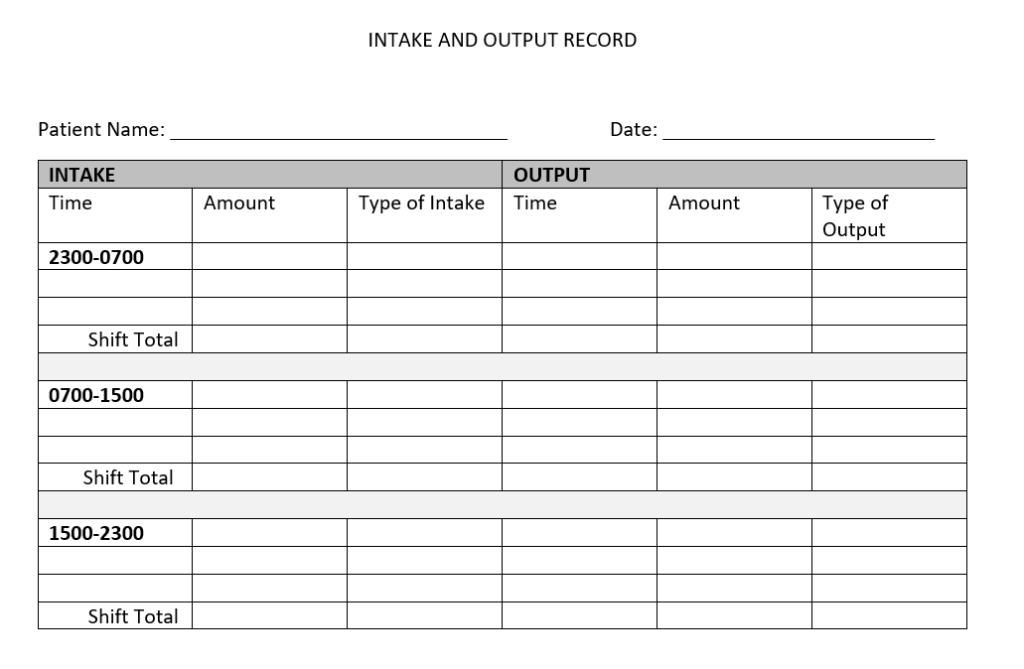7.7 Measuring Intake and Output
Nursing aides assist with documenting clients’ intake and output. Intake refers to the amount of fluids the client ingests, and output refers to the amount of fluids that leave the body. Total intake should be nearly equal to total output every day, but some fluids, referred to as “insensible losses,” cannot be measured, such as fluids lost through the respiratory system, sweat, and stool. Therefore, urine is the most commonly measured output. Other fluids, like wound drainage in a drainage device, are also measured.
Fluids are typically documented as milliliters (mL). See the Chapter 5.7, “Documentation of Food and Fluids” subsection for review of converting ounces to mL and additional information on measuring intake and output.
Fluid intake is routinely documented with meal intake. Some clients with certain health conditions also have their output measured and documented every shift. Intake and output are then calculated over a 24-hour period and monitored by the nurse. A client’s intake and output (“I&O”) may be closely monitored by the nurse due to illness, a new medication, or a circulatory or urinary condition. See Figure 7.15[1] for an example of a 24-hour intake and output documentation record.

- "Intake and Output Record.PNG" by Chippewa Valley Technical College is licensed under CC BY 4.0 ↵
The amount of fluids the client ingests.
The amount of fluids that leave the body.
Fluids losses that cannot be measured, such as fluids lost through the respiratory system, sweat, and stool.
Fluid intake and output measured and documented every shift.

